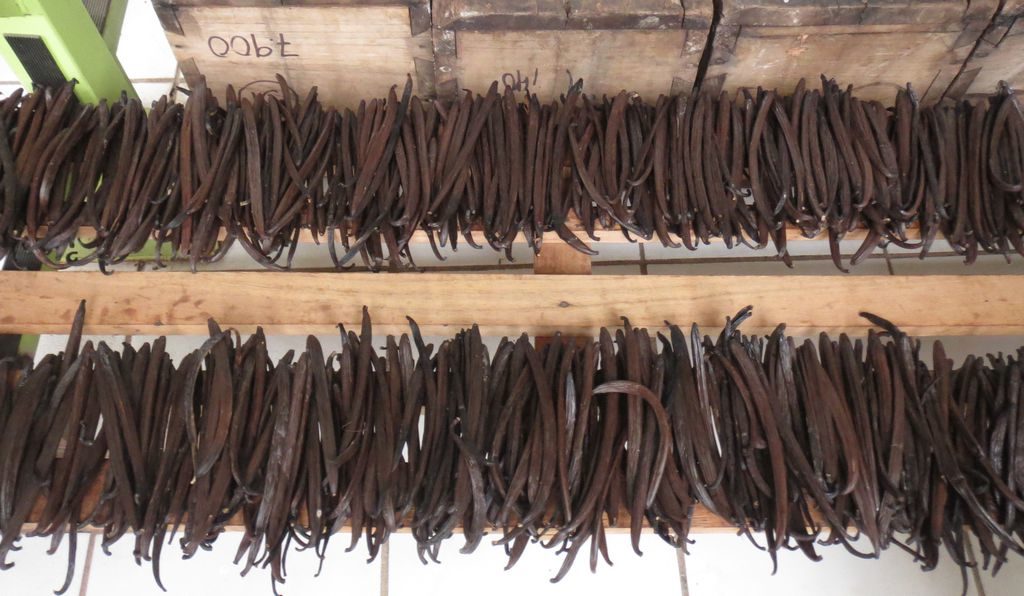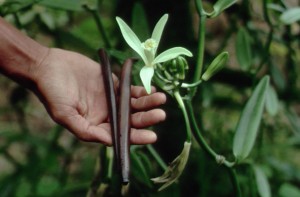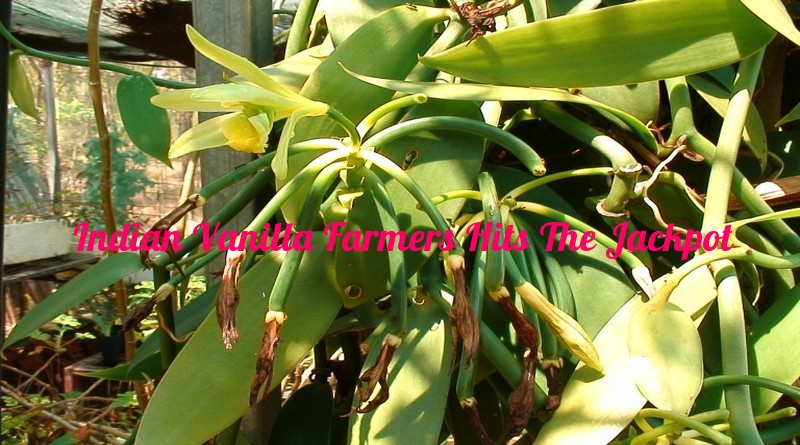Vanilla price reaches record high after Madagascar cyclone
A cyclone named ‘Enawo’ that hit Madagascar on March 7 has damaged a significant portion of the vanilla crop in the world’s top producer,pushing prices to beyond $500/kg in international markets.
Two of Madagascar’s largest vanilla-producing areas were hit hard According to preliminary reports 90% to 100% of the crop in Antalaha was destroyed and 80% of the crop in Sambava was destroyed.
Cyclone Enawo,is believed to have damaged 30 percent of the vanilla crop and market watchers feel the prices of the commodity may even touch $600/kg. Six years ago vanilla beans were at about $20/kg.

At the beginning of 2016 vanilla prices from Madagascar were in the range of $200 to $250/kg. A projected 2016 crop of 1,800 to 2,200 tonnes of vanilla beans in Madagascar was expected to bring down prices. Now, Aust & Hachmann, the oldest Vanilla dealers worldwide, expects the 2016 crop probably was no larger than 1,200 tonnes.
Indian Farmers Hits Jackpot
Vanilla deficit due to natural calamity that hit the largest vanilla producer in the world,Madagascar.India is up for competition in the global vanilla market. Lesser availability of the product has pushed the prices up.
The price of green vanilla beans is around 3,000-4,500 per kilo, while dried and processed beans are sold for 20,000-25,000, depending on the quality and length of the beans. Disease-free vines also fetch a decent price.

Indian vanilla farmers, mainly those in Kerala, Karnataka and Tamil Nadu (along the Western Ghats) enjoyed a few good years of trade, producing as much as 2,000 tonnes of beans per year. However, after trade picked up in Madagascar, India’s production fell to as low as 150 tonnes a year. With this new rise in demand for the product, production has once again increased to 400 tonnes.
Price of vanilla in the international markets has gone over $600 per kilo. The price in India has matches the trend too. However, when Madagascar recovers from the calamity, the prices are bound to fall again. Just as it happened after the good export period of 2005-2008. – R Mahendran, a vanilla enthusiast and entrepreneur in Pollachi.
Synthetic vanilla extract wiped out domestic market
Today, most of what we eat is actually artificial vanilla flavoring. In the late 19th century, scientists figured out how to derive vanillin—the dominant compound that gives vanilla its signature aroma—from less expensive sources. These included eugenol (a chemical compound found in clove oil) and lignin, which is found in plants, wood pulp and even cow feces. Today, about 85 percent of vanillin comes from guaiacol that’s synthesized from petrochemicals.
Indian industries have primarily been using synthetic vanilla hence, there is no demand for the natural one in the domestic market. We should create awareness about the health benefits of using organic vanilla than the synthetic ones which are created from petrochemicals.
Demand for pure, natural vanilla has been growing after food manufacturers including Nestle SA and Hershey Co. shifted from artificial flavouring. Farmers haven’t been able to keep up with increasing consumption, as it takes three to four years for plants to start producing vanilla beans.
Vanilla Plant
 Vanilla comes from a bean pod that grows on a vine-like orchid that’s originally from Mexico and was introduced to Madagascar in the 1800s. Due the island doesn’t have a certain kind of pollinating bee, this is done by hand. The flowers that produce the pods open for less than a day each year and, if they’re not pollinated during that time, that means no vanilla.
Vanilla comes from a bean pod that grows on a vine-like orchid that’s originally from Mexico and was introduced to Madagascar in the 1800s. Due the island doesn’t have a certain kind of pollinating bee, this is done by hand. The flowers that produce the pods open for less than a day each year and, if they’re not pollinated during that time, that means no vanilla.
Current Situation in Madagascar
Decent vanilla crop in Madagascar may reach 2,000 tonnes, no other country comes close to a crop of 1,000 tonnes. Indonesia probably contributed more than 500 tonnes to worldwide trade in 2016, but the majority of that was from previous crops, and now inventories in Indonesia are down, according to Aust & Hachmann. Production in Uganda is below 100 tonnes. Papua New Guinea may provide some relief as production there should be significant in 2017.
Vanilla beans were on the vine ripening when the cyclone struck. Such vanilla could be processed and sold, but the quality would be poor.
The report added green vanilla bean extraction and quick-cured product in Madagascar are hurting vanilla quality in Madagascar. About 300 to 400 tonnes of vanilla beans were removed from the 2016 crop as a result of green vanilla extraction. Through quick-curing, harvested green vanilla beans are cured and available for export in weeks instead of months.
Sources:
1.newindianexpress
2.indoasiancommodities
3.livemint
4.smithsonianmag
